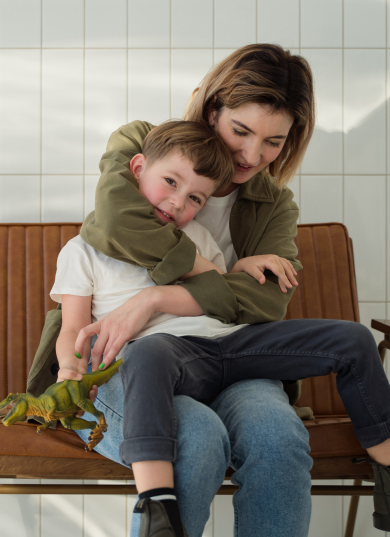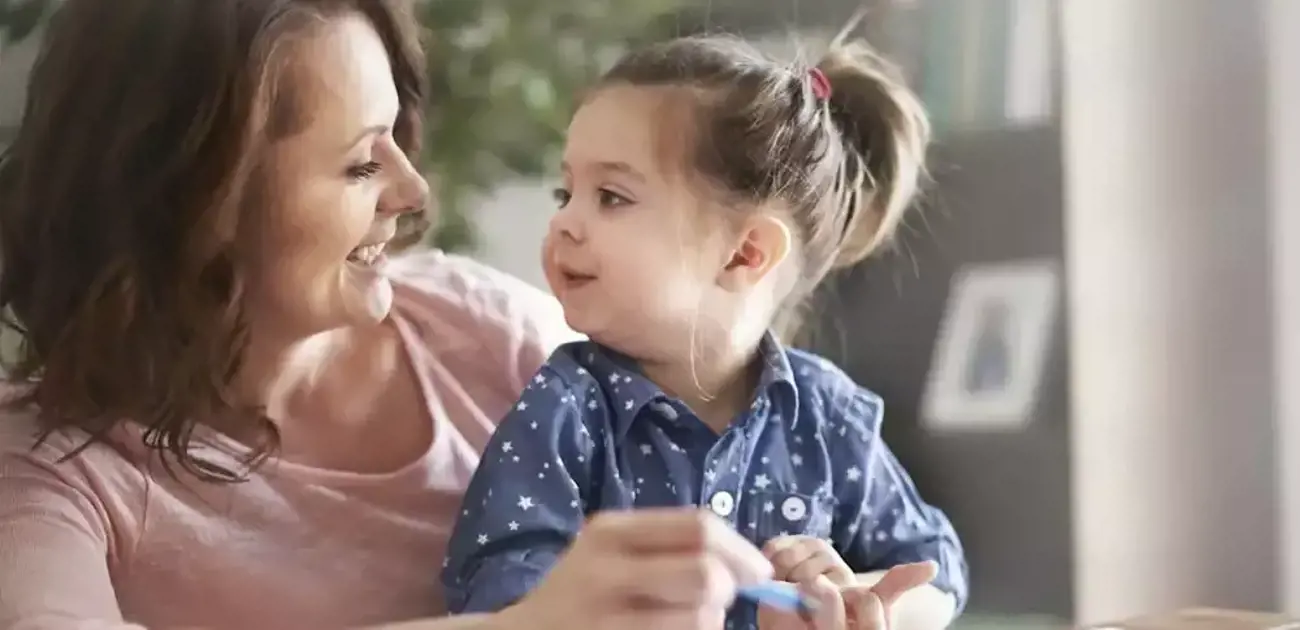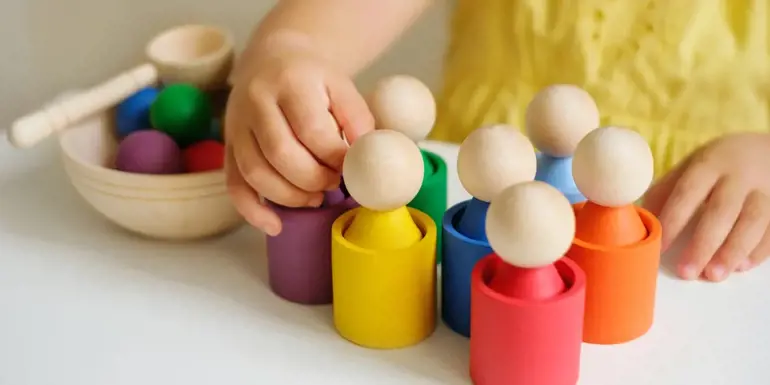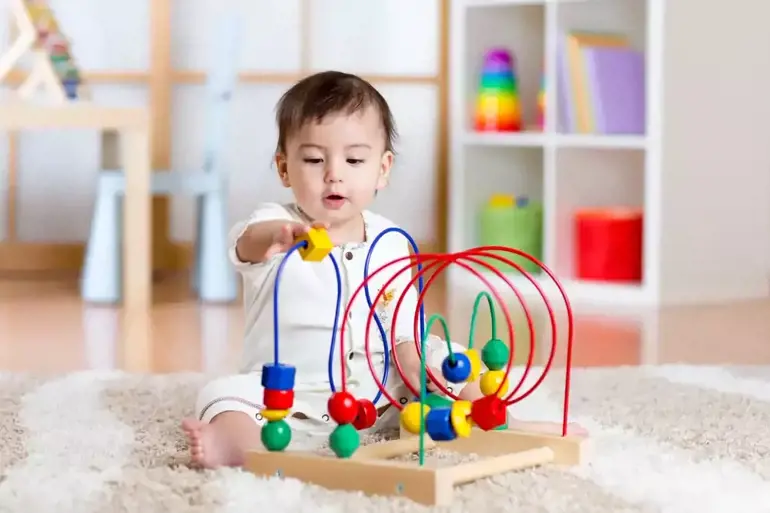We’re living in strange times, with COVID-19 meaning that parents and children are at home together for long stretches of time, and our usual patterns of work, child care and extracurricular activities have been interrupted.
The good news is that there are lots of ways for stay-at-home families to connect, play, learn and fill in the hours indoors.
Here are 6 ways to keep under fives busy and parents sane.
1. Get creative
Art and craft is easy to set up (and not so hard to clean up) at home. Drawing, painting, gluing and cutting builds youngsters’ mental and physical skills, and these hands-on activities provide lots of chances for under fives to:
- Practice their fine motor skills and hand-eye coordination;
- Learn to identify shapes, colours and textures; and
- Communicate, listen, focus, relax, imagine, experiment and have fun!
There are squillions of arty ideas on Pinterest and you’ll also find inspiration at sites like, The Artful Parent, ABC Kids Listen and Raising Children.
Large-scale projects, like cardboard box cubbies, castles and shops are also great because they take time to make and open up hours of entertainment once built.
- Enjoy a book
Books are a wonderful way to while away the hours and boost your child’s brain, and in these modern times, you don’t need to have a huge home library.
You can read books on paper and on-screen, and listen to them too. Audible is offering hundreds of books for free while COVID-19 is keeping kids at home, and celebrities are reading children’s books at Save with Stories to help raise money for kids’ charities.
- Play games
Card games and board games will fill in the hours and get young minds thinking, and along with classics like Snap! and Guess Who?, there are lots of DIY games for under fives to enjoy:
- ‘I Spy’ can be played at home to develop social skills and get the whole family involved.
- Memory games teach youngsters how to think, pay attention, concentrate and ‘try and try again’. All you need is a tray filled with small household objects (e.g. a small toy, teaspoon, leaf, pencil, key etc.) and a small cloth to cover them. See how many items your child can remember under the cloth, or ask them to name the ones you’ve removed once the cloth is lifted. And repeat!
- Role-play games get the imagination flowing while stuck indoors. You can raid the wardrobe for dress-up games, go wild with ‘guess the animal’ games and play with homemade or store-bought puppets.
- Stacking and building games are also recommended. Your child can use blocks, boxes, cushions, plastic containers or dominoes, and whatever they choose, they’ll have fun balancing, problem-solving and reaching for the stars (or more likely, ceiling).
- Card game Zoolu is the perfect antidote to too much screen time, with colourful animals and a fun strategy, it will keep your preschooler happy for hours. See below to win your own Zoolu game pack.
- Get physical
Whether you have a large backyard or a small living room, it’s also important to play physical games and get little bodies moving:
- Ball play involves catching, kicking, throwing and giggling, with flexible gameplay meaning that you can roll a soccer ball in the garden, catch a scrunched up piece of paper and throw sock ‘balls’ into the laundry basket.
- Rough-and-tumble play can happen on a bed, rug or patch of lawn, and it includes ‘tickle wars’, piggyback rides, chasing games, play wrestling and monster/animal role-play to exert energy indoors and out.
- Treasure hunts ignite the imagination and the looking skills, and young children can either follow drawn/written clues or find a list of items (e.g. a red DUPLO brick, wooden spoon, black sock etc).
- Obstacle courses are a great way to burn off some beans, and they can involve children navigating household objects, jumping over soft toys and throwing themselves into physical challenges, like star jumps and hopping.
- Dancing around to music is also lots of fun, and YouTube is a simple way to make your home into a disco. To add to the action, you can play musical chairs, musical statues, follow the leader or hide and seek with tunes playing in the background.
- YouTube is also your friend for online yoga classes and physical education for children. Cosmic Kids has yoga classes for ages two to four (and older), and Joe Wicks is offering free PE classes for toddlers, preschoolers, school kids and everyone.
- Log on for early learning
The worldwide web makes it easy to continue your little one’s early childhood education at home.
Your child care provider can suggest quality content, and there are lots of online learning portals that help under fives learn with the help of educational games and worksheets. Many have free trials and free content to get you started, and sites like Reading Eggs, Scholastic Learn at Home, IXL and edHelper provide content for preschoolers.
- Cook something together
Whether you’ve made it to the shops for fresh supplies or are relying on pantry items, there are lots of yummy recipes to make together at home.
Cooking is a great way to teach under fives how to count ingredients, use utensils, appreciate healthy food and even read a recipe. You might teach your toddler how to safely use a knife or show your preschooler how to knead bread dough, and when cooking with young children, Jamie Oliver recommends that you:
- Start them in a toy kitchen;
- Work one-on-one
- Choose a recipe with instant results, like sandwiches and fruit smoothies;
- Prep ingredients ahead of time;
- Let young children taste as they cook; and
- Keep your surfaces clean and your child safely supervised.
Although kids love making cookie dough, remember that there are some great recipes for play dough too. There’s the classic cream of tartar version, plus loads more recipes to try.
At the end of the day, home time provides plentiful opportunities for under fives to learn through play, engage their brains and get hands-on with new activities.
Early childhood trainer and consultant, Michelle Walsh, suggests that parents should prepare their homes for play first thing in the morning (e.g. by getting out some art materials or opening a pack of cards), ‘then let the day flow.’
In between doing activities suggested by Mummy or Daddy, your child might like to play with their doll baby, sculpt a play dough monster or do that artwork, so wait to see what takes their fancy.
And although stay-at-home life brings its share of challenges, try to see this time as an opportunity to experiment with new activities, have a laugh and bond as a family, because these days won’t last forever and your child won’t be little for
Win a Zoolu Card Game Prize Pack!
Zoolu Card Game is a fun, screen-free way to entertain the kids at home. We’re giving away 3 prize packs, containing a copy of the game, an animal-themed greeting card and a sticker.
To enter, just tell us what your family likes to do together at home.
Email competition@careforkids.com.au for your chance to win, and head to www.zoolugame.com for stacks of free kids’ printables. Zoolu can be purchased for just $5 per game while the COVID-19 pandemic is keeping kids at home.



































